This is a test question in a study book about electronics. I cannot find the answer and have no idea which picture identifies a pin.
Am I missing something? Any help on the right answer along with why that answer is correct would be helpful.

This is a test question in a study book about electronics. I cannot find the answer and have no idea which picture identifies a pin.
Am I missing something? Any help on the right answer along with why that answer is correct would be helpful.
I expect this to be a typographical error. They used the wrong picture to illustrate the question. In this case they used the same picture as the one used in question 2-28. The questions 1-36 and 1-37 have good images to identify the pin1 and I assume something similar was intended for the question 1-35.
A pdf version of the book is this, and question in case is at page 162.
This question makes no sense.
First and foremost: The letters don't identify pins. They appear to identify four separate diagrams, each depicting a separate part! At best, we can imagine that each letter is meant to label one of the two pins on each of four different parts; even then, though, each of those parts would theoretically have a "pin 1".
Second: Pins are typically not numbered on radial packages of the type shown in these pictures. If a part is polarized (e.g, a diode or electrolytic capacitor), the pins may be identified as "anode/cathode", or "positive/negative", but I have never seen them designated with numbers.
Third: Even if we were to assume that these diagrams were meant to depict polarized parts, and that the book used some standard for numbering their pins (1=anode / 2=cathode perhaps?), the identifying marks which would be needed to identify them are all absent! A diode or electrolytic capacitor would typically have a stripe or bar near one end, for instance. However, all of the components in these diagrams are completely unmarked.
If I had to guess, I'd say the diagrams are meant to be paired with a completely different question, along the lines of "which of these components is mounted correctly" (to which the correct answer would be C).